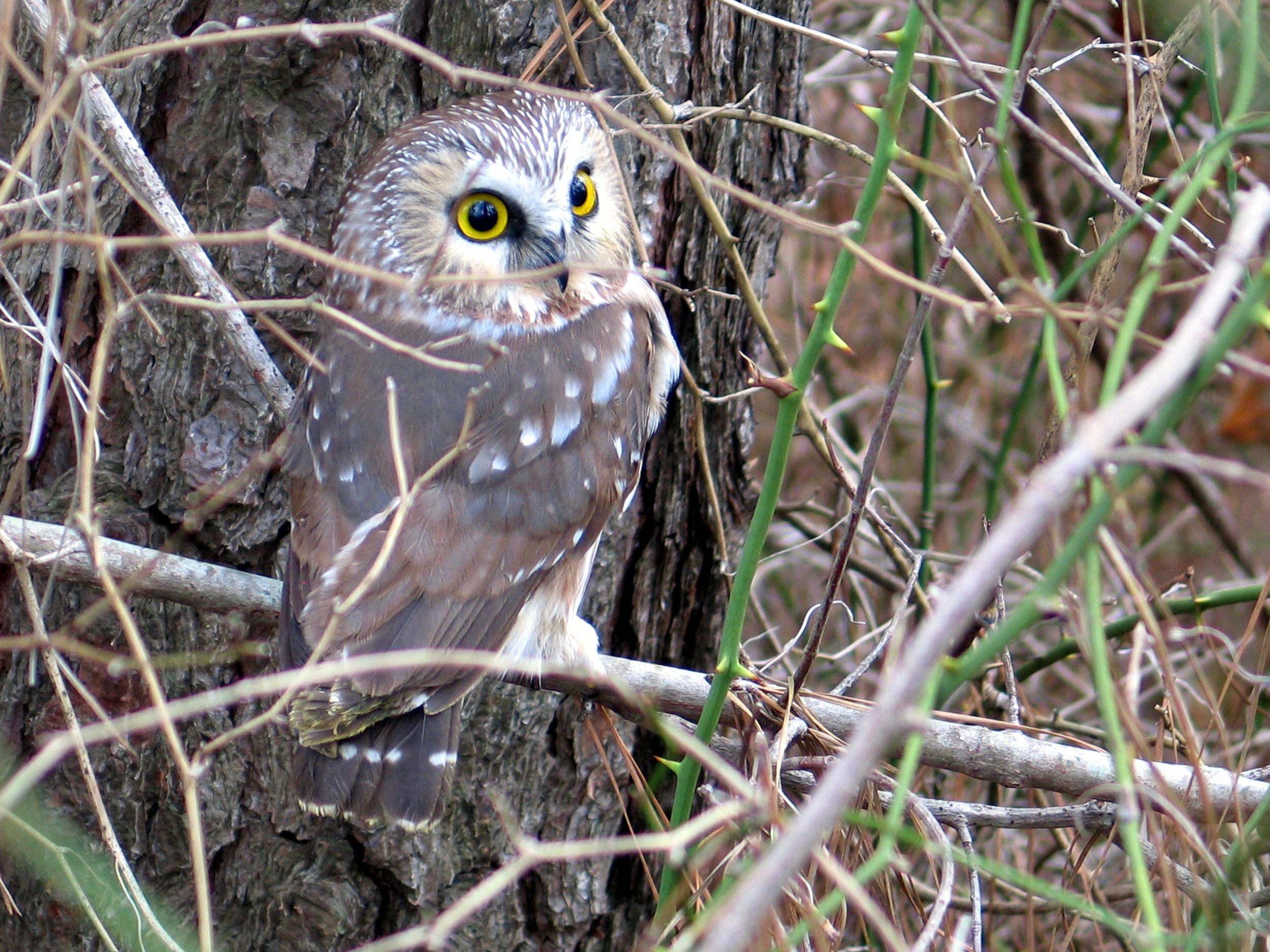2019 Species T-shirts Now Available!
Each year, Blue Ridge Discovery Center designs stylish graphic tees featuring a collection of species that are unique to our region. This year’s collection includes:
Northern saw-whet owl
Gray’s lily
Northern pygmy salamander
Spruce-fir moss spider
The 2019 Species Shirt Collection is now available in our online shop. Adult and youth options are available. Continue reading for full descriptions!
The 2019 Species Shirt Collection
The second smallest native owl species, the northern saw-whet owl generally remains deep within the Canadian taiga, but its breeding range extends down through the Appalachian Mountains, where it ends in the Southern Appalachian spruce-fir forest. Feeding on insects, small rodents and birds, northern saw-whet owls scoop up their prey with one fatal blow, swooping down to the forest floor with silent wings. Superior eyesight allows them to both hone in on prey as well as avoid predators, which often come in the form of larger owls. These are named for their monotonous whistle; the squeaking sound resembles the raspy creaking of an old crosscut saw being sharpened. Northern saw-whet owls spend the winter in the lowlands, migrating back to northern and clinal subalpine forests in the spring, where they will raise a brood of bizarre, exotic-looking fledglings. Look in thick, coniferous cover and you might catch a glimpse of this rare bird of prey.
Northern saw-whet owl (Aegolius acadicus)
The blossoms of Gray’s lily are bright red and they shine like beacons through foggy waves of grass in their characteristic montane habitats during the summer. The Gray’s or Roan lily, Lilium grayi, is a threatened, endemic species first discovered by legendary nineteenth century botanist Asa Gray, who wrote notes on the unusual features of these beautiful flowers, but humbly refrained from immediately attempting to describe the plant. Later, it was discovered to indeed be a new species, and was named in Gray’s honor. A truly unique lily, the Gray’s lily illustrates the beauty associated with biodiversity, and as a result, it is an important testimony of the Blue Ridge’s botanical significance. Now, an introduced fungal pathogen is wreaking havoc on this species, but they may still be found fighting to bloom in the scenic natural grasslands of the mountains.
Gray’s lily (Lilium grayi)
Named Desmognathus organi after herpetologist James Organ who laid a foundation for salamander research in the Mt. Rogers area, this Lilliputian salamander is truly a sight to behold. Pygmy salamanders have a characteristic herringbone pattern which resembles pinecone scales, and a beautiful golden coloration. A terrestrial species of dusky salamander, northern pygmy salamanders forage for small insects atop the leaf litter on cool, moist spring and summer nights. In fact, pygmy salamanders are excellent climbers and have been found foraging several feet above the ground on the bark or vegetation of trees. Unlike most amphibians, they will even lay their eggs outside of the water and the female will fiercely guard her brood from predators and infections. As a testament to their name and size, an adult female coiled around her eggs could fit easily atop a quarter.
Northern pygmy salamander (Desmognathus organi)
Spruce fir moss spiders, Microhexura montivaga, are often affectionately referred to as the “tiny tarantulas of the mountains” because of their resemblance and relation to the giant tarantulas of tropical regions. This species is a critically endangered spider restricted to the rare Southern Appalachian spruce-fir forest habitat on a few mountaintops of the Blue Ridge. These spiders are certainly tiny; adults seldom grow larger than one eighth of an inch. These spiders construct thick tubes of silk amongst the rhizomes of hair cap mosses such as Dicranodontium and Polytrichum. Their webs resemble those of the also related trapdoor spiders, and mainly hunt tiny soil microfauna detected crossing above. Few have seen this spider, and it remains one of the more mysterious denizens of southern boreal forests.
Spruce-fir moss spider (Microhexura montivaga); Photo by Marshal Hedin
With your purchase you are supporting Blue Ridge Discovery Center's mission to inspire creativity, discovery, and critical thinking through interest-driven and hands-on activities focused on the Blue Ridge Mountains.









